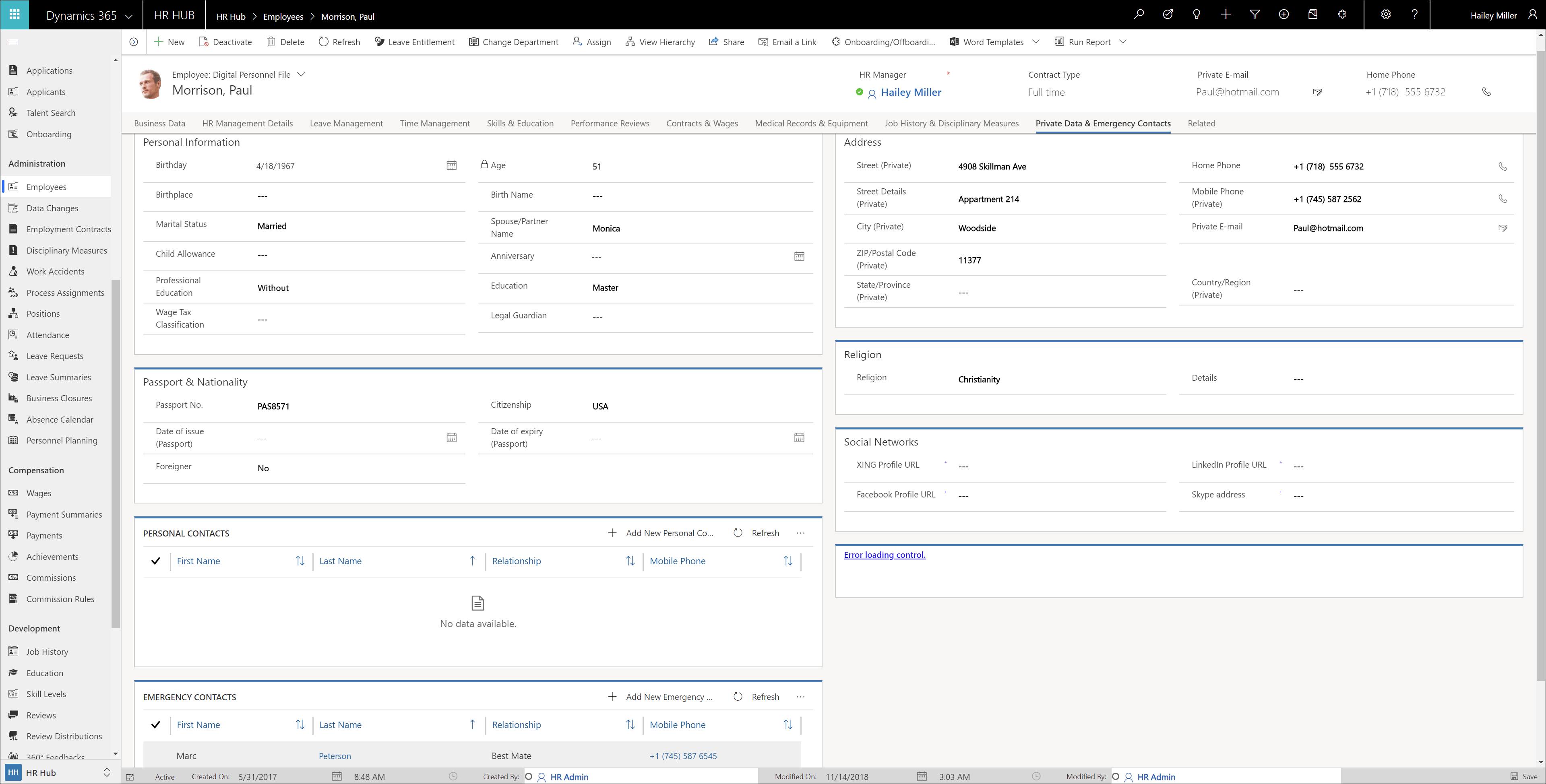Private Data & Emergency Contacts
This section contains private and personal data of the employees. The private address and profiles of social networks can be entered here, but also emergency contacts and personal contacts can be defined.
The section is divided into eight sectors

1. Personal Information
Here you can enter personal data about the employee. The fields are self-explanatory. Only the age is calculated from the birthday.
The age as well as the birthday are also automatically taken over into the birthday list of the company.
2. Passport & Nationality
Here you can enter the passport data. These are exclusively free text fields whose purpose is self-explanatory.
3. Emergency Contacts
In this section you can create emergency contacts.
To do this, click on the + Icon in the upper right corner of this sector.
In the Quick Create Menu, fill in all the data that you want to enter for this emergency contact and Save
4. Personal Contacts
Here you have the opportunity to create private contacts.
Click on the + Icon in the upper right corner of this sector.
Now fill in all the fields that you want to enter. Note that the bottom section is only displayed if you enter a relative. In the case of another contact, you will not see this section. Finally, you can Save & Close
5. Adress
These fields are self-explanatory. Even if you can select the federal state and the country from your database here, it does not influence any other functions.
Only the displayed map uses this data to locate and display your place of residence.
6. Religion
Here you can select the religion from a drop-down field and enter details if necessary. If a religion is missing from the existing list, you can add it at any time.
Instructions on how to extend the list can be found as an example here: Extend an option set
7. Social Networks
Here you can enter links to social networks
8. Karte
This map uses the address data from sector 5 and displays the employee's place of residence.
Back to top | Back to section overview | Back to table of contents
